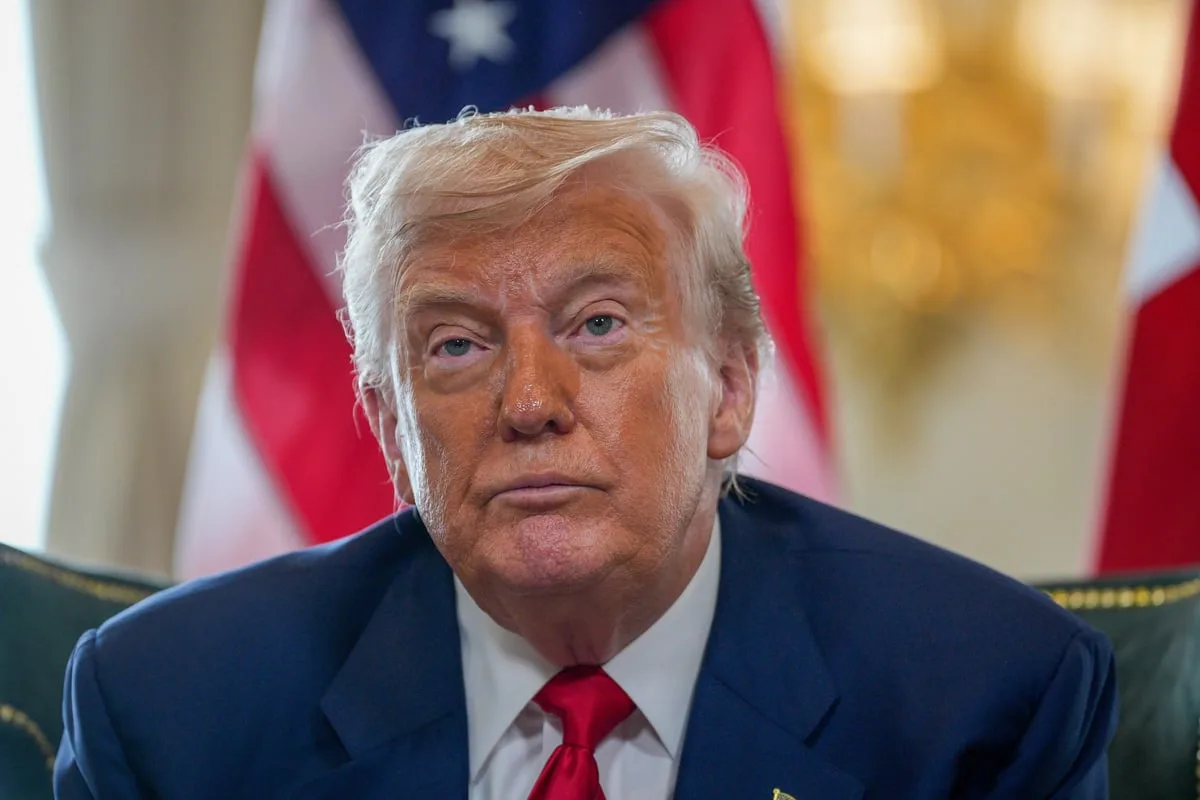What started as another verbal exchange between global leaders is quickly spiraling into something far more serious.
U.S. President Donald Trump has taken a dramatic step by deploying American nuclear submarines closer to Russia’s borders, following what he described as dangerous and provocative comments from a top Russian official.
Trump Reacts to Russian Threats with a Show of Force
Speaking to Newsmax, Trump didn’t hold back.
He confirmed that two U.S. nuclear submarines had been moved “closer to Russia,” calling the situation “terrible” and warning that it was important to be “very careful” given the escalating rhetoric.
This decision, according to Trump, came in direct response to a threat issued by Dmitry Medvedev, Russia’s former president and now a senior figure in the country’s Security Council.
Trump said, “A threat was made, and we didn’t think it was appropriate. So I have to be very careful… we’re going to protect our people.”
Ultimatum to Russia and Warning to Their Allies
The former president didn’t stop at submarine deployments.
He issued a new ultimatum: unless Russia agrees to a peace deal by the end of next week, his administration would introduce what he called “secondary sanctions” — penalties that would extend to any nation continuing to do business with Russia.
This aggressive approach underscores how Trump intends to separate himself from past diplomacy, pushing hard for results through threats of economic punishment.
Medvedev’s Comments Spark the Move
It all began when Medvedev publicly mocked Trump’s position, saying that threatening Russia with sanctions was essentially a “step toward war” — not just with Ukraine, but with America itself.
His tone was mocking, comparing Trump’s approach to that of President Biden, whom he derided as “Sleepy Joe.”
Trump responded furiously on Truth Social, writing: “Tell Medvedev, the failed former President of Russia, who thinks he’s still President, to watch his words. He’s entering very dangerous territory.”
Submarines Positioned as Strategic Warning
While the U.S. already has a significant number of nuclear-powered submarines deployed worldwide, Trump’s announcement appeared to be more of a symbolic warning than a new military necessity.
Still, the message is clear — these are not just ordinary ships.
Each Ohio-class submarine can carry up to 20 Trident II missiles, and each missile can hold multiple nuclear warheads.
These weapons are capable of hitting targets nearly 7,500 miles away with devastating force.
Their mere presence near Russian waters sends a signal that the U.S. is ready to respond to any major provocation.
Escalation Follows Deadly Russian Attack on Kyiv
Trump’s escalation came just hours after Russia launched another brutal strike on Ukraine’s capital.
The attack killed at least 31 people and injured over 150, including a six-year-old child.
Ukrainian President Volodymyr Zelensky posted harrowing footage from the scene, showing a destroyed apartment building and rescue teams searching for survivors.
“This is terrorism,” Zelensky wrote. “Russian terrorists.”
The timing of Trump’s comments suggests he’s leveraging the emotional weight of Russia’s latest assault as justification for his aggressive stance.
Trump Keeps Distance from Putin, but Not His Allies
Although Trump has often claimed he could “get along” with Vladimir Putin, he has recently expressed frustration with the Russian leader.
Trump revealed that after seemingly pleasant phone calls with Putin, Ukraine would be attacked just hours later.
While Trump has largely directed his anger toward Medvedev, this tactic allows him to criticize Russia’s aggressive behavior without going head-to-head with Putin himself.
Calls for Peace Meet Realpolitik
In response to Trump’s ultimatum, Putin himself appeared more reserved but firm.
Speaking publicly, he said that high hopes for an immediate peace deal were “inflated” and suggested that real peace would require “quiet” and serious negotiations — not ultimatums made on social media.
Putin’s comments subtly dismissed Trump’s tactics, but they also avoided direct escalation.
Nuclear Firepower as a Reminder of U.S. Might
Trump’s mention of nuclear subs wasn’t just about movement — it was a not-so-subtle reminder of what they’re capable of.
Each submarine’s arsenal could unleash devastation far worse than Hiroshima.
With up to 160 nuclear warheads spread across the fleet, the U.S. remains a dominant nuclear power capable of wiping out entire regions if provoked.
Melania’s Reaction Reflects Civilian Toll
In a rare personal detail, Trump shared a conversation with Melania that underscored the human cost of this conflict.
After what he described as a “wonderful” phone call with Putin, Melania reminded him that another Ukrainian city had just been bombed.
This moment of reality seemed to shake Trump, nudging him to take a tougher line.
Changing U.S. Policy Direction on Ukraine
Interestingly, Trump’s posture marks a shift from the Biden administration’s heavy financial and military support for Ukraine.
Recently, the Pentagon even froze certain arms shipments, possibly reflecting Trump’s more cautious approach.
His actions now suggest a pivot — away from endless aid and toward hard-line ultimatums with serious consequences, both for Russia and its global trade partners.
What Comes Next?
As the deadline looms for Russia to respond to Trump’s demands, the world watches closely.
Will Medvedev escalate the war of words further?
Will Putin engage in quiet diplomacy or retaliate with more attacks?
One thing is clear: Trump’s deployment of nuclear submarines and threat of wider sanctions has pushed U.S.-Russia relations into even more dangerous territory.
The next move could define how far this standoff goes — and whether it remains verbal or turns into something much worse.

